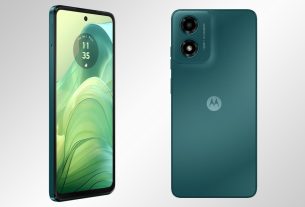
Change can be good or bad, and while Motorola as a company has seen its fair share of change, the Razr series of phones which was first released in 2004, has also evolved quite a bit. Fans of the original RAZR V3, which mainly includes millennials (including myself), might find the not-so “edgy” design of the latest
Motorola Razr 40 Ultra daylight camera samples (tap to see full size)
In daylight, images from the primary camera have good details, but with slightly limited dynamic range. This is visible in the shadows and when you point the camera towards the direction of the light. Still, the camera’s HDR system handles darker areas better than the brighter areas, which often get clipped in odd lighting situations. Overall, the images have a slightly contrasted look. Colours are also saturated, but some may prefer this. I also noticed minor purple fringing in brighter scenes.
Motorola Razr 40 Ultra low-light camera samples (tap to see full size)
In low light, photos look surprisingly good using Night mode. I preferred using it compared to the primary camera’s Auto mode as it delivered better dynamic range and managed to maintain sharpness despite longer exposure times. In street-lit scenes dynamic range is excellent, while finer details with grass and other foliage seems to be on the lower side. Colours too are quite good when compared to the Auto mode photos. However, dimly-lit scenes show visible noise in the darker areas.
Motorola Razr 40 Ultra ultra-wide-angle camera samples (tap to see full size)
The ultra-wide angle camera does a fine job of capturing photos in daylight. These appear sufficiently sharp and with good colours and dynamic range. In fact the ultra-wide camera is a lot more consistent when it comes to colours, shot-to-shot, compared to the primary camera. Lens barrel distortion is under control as well. Details are also quite good. However, in low light, details take a hit and the camera struggles to focus even in street-lit situations leading to softer or out-of-focus images at times. Tapping the screen to lock focus before shooting results in better images.
The ultra-wide-angle camera also doubles up as a macro camera. It captures some really impressive photos with good colour and dynamic range and gets you really close to the action.
Motorola Razr 40 Ultra selfie camera samples (tap to see full size)
Selfies come out looking sharp, clear and are well exposed with accurate edge-detection. However, the results are the exact opposite when shooting at night, with mostly flat textures that resemble an painting. I preferred using the primary camera for shooting selfies as the results were obviously better in all types of lighting conditions.
Shooting videos at 4K 30fps is the sweet spot with good details and stabilisation. However, the auto-exposure adjustment is a bit of a problem so it appears as though the video is flickering. Shooting at 4K 60fps made the videos appear a bit contrasted with less detail. The framerate was also not stable and kept fluctuating while shooting. The Razr 40 Ultra is also capable of recording HDR10+ video at 4K 30fps, but these aren’t stabilised and come out quite choppy among other problems.
Recording video in low light was not a good experience. 4K 30fps footage came out dark, contrasted and noisy. The stabilisation was not good either and there was also the same exposure-related problems I spotted when capturing daylight footage. 4K 60fps footage looked even darker and nosier, but showed a steadier framerate.
Verdict
Motorola has a real winner in its hands with the Razr 40 Ultra. It attempts to innovate in a market segment that is loaded with cutting-edge technology and manages to pull it off without any noticeable gimmicks. Its cover display is by far the best we have currently, although that could quickly change. The fluid display and software optimisation also makes this cover display one of the most practical user experiences of its segment. It has a capable set of cameras and also offers a macro mode.
Of course, the Razr 40 Ultra is not without flaws. The heating issue when using the camera app is the primary one. But at Rs. 89,999, it is still hard to find a foldable which is oozing with so many features, and looks slick while pulling it all off. The new flagship Razr should appeal to a lot of premium Android users who are looking for something new and refreshing in a smartphone.


